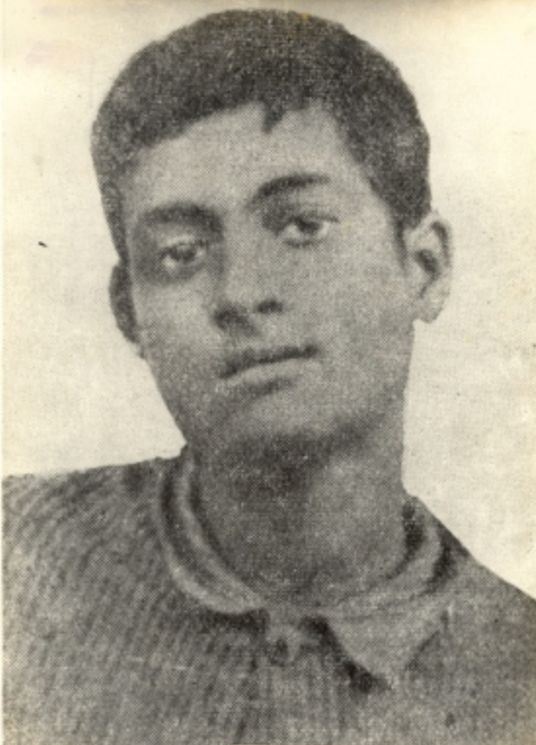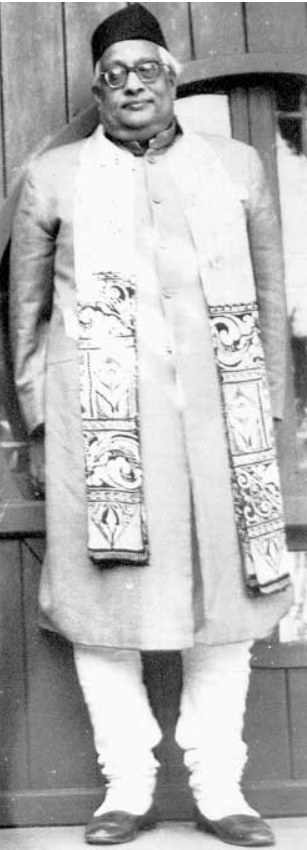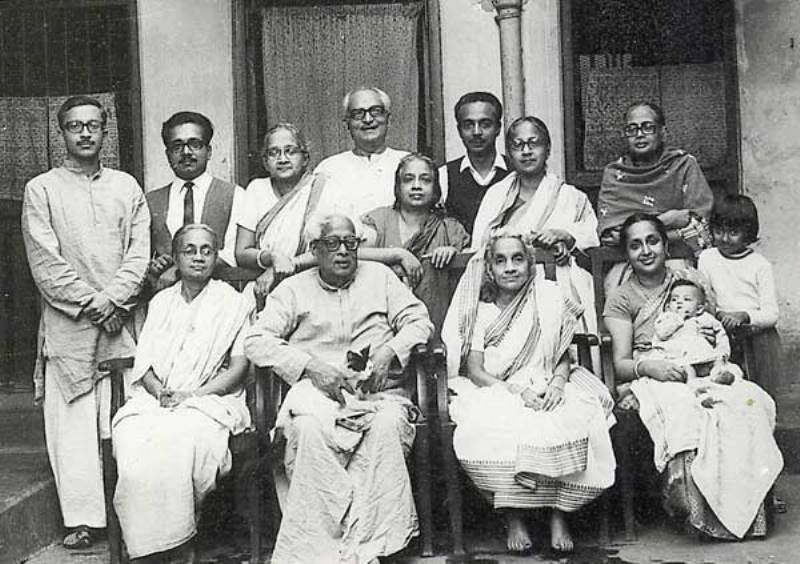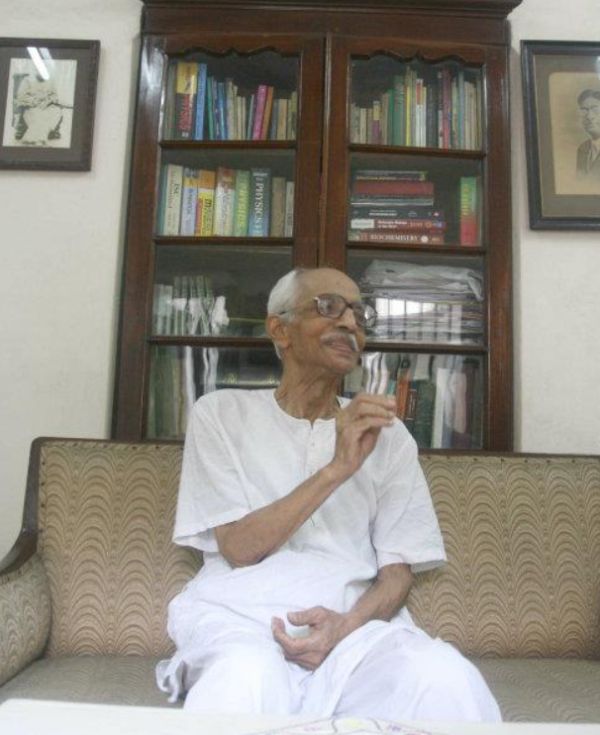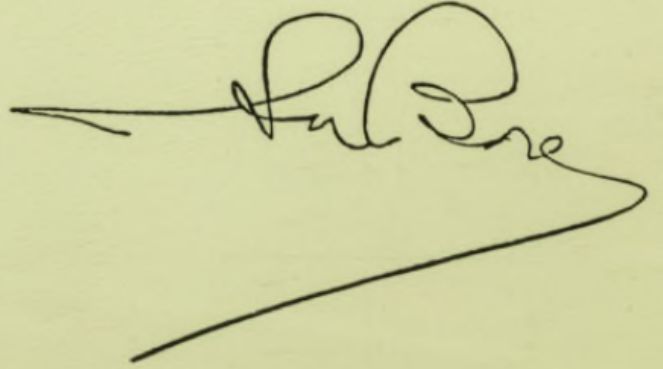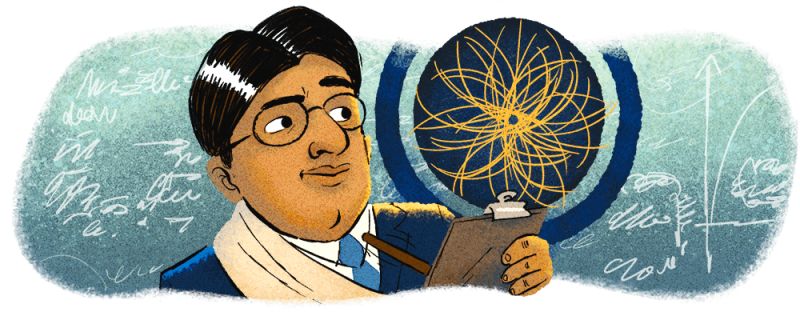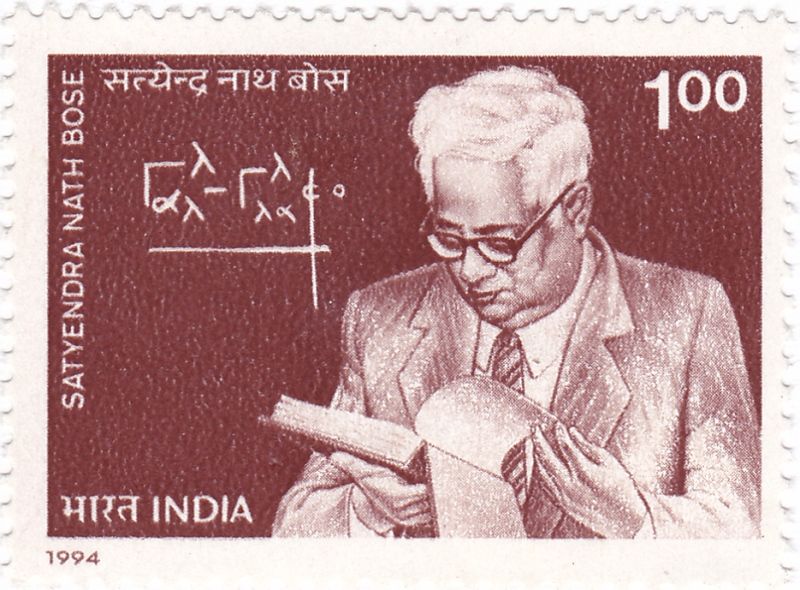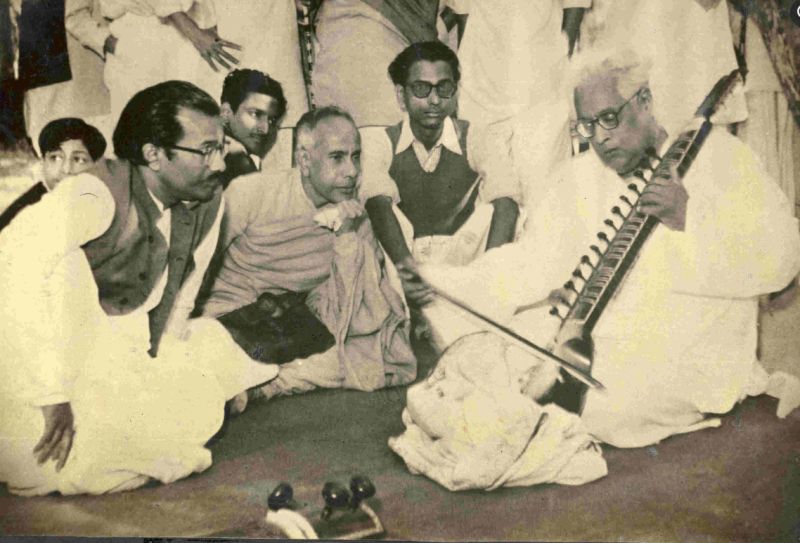Satyendra Nath Bose (1894-1974) was an Indian mathematician, physicist, and professor who changed the dynamics of quantum mechanics in the 1920s by laying the foundation of Quantum Statistics and a base for modern Atomic Theory. He is known as the ‘Father of the God Particle’ for laying the ground for the seminal discovery of the ‘boson’ particle, which is assumed as the carrier of all forces in Nature after the Big Bang happened. His collaboration with Albert Einstein resulted in the popular ‘Bose-Einstein Condensate’ and ‘Bose-Einstein Statistics.’ He was a recipient of Padma Vibhushan, a Fellow of the Royal Society, and was made the National Professor for 15 years. His passion and research work for understanding the intricacies of the universe laid the foundation for today’s bigger scientific experiments, involved in unravelling the mysteries of the Universe. He served on many research and development committees in India and served as a nominated member of the Rajya Sabha. S. Bose died on 4 February 1974 of a sudden heart attack.
Wiki/Biography
Satyendra Nath Bose was born on Monday, 1 January 1894 (80 years; at the time of death) in Calcutta, Bengal Presidency, British India (now Kolkata, West Bengal, India). His zodiac sign is Capricorn. He grew up in an extended family of Bengali Kshatriyas and started attending nearby schools when he was 5.
In 1907, his family shifted to Goa Bagan, where he passed his matrics with a fifth order of merit from the Hindu School in 1909.
His teachers recognised him as a gifted child, and his mathematics teacher at the Hindu School would proclaim him a genius in mathematics who would one day be known as another Laplace or Cauchy. He completed his intermediate science course at the Presidency College, Calcutta, where he was fortunate to be taught by talented teachers like Jagadish Chandra Bose, Prafulla Chandra Ray, and Sarada Prasanna Das. At the Presidency College, he met his contemporaries like Meghnad Saha, N. R. Sen, and J. C. Ghosh, who later became famous names in the field of science. The statistician geniuses like Prasanta Chandra Mahalanobis and Sisir Kumar Mitra were his seniors.
He continued his BSc in mathematics at the Presidency College and stood first in 1913. He pursued an MSc in mixed mathematics at Science College, Calcutta University, where he not only stood first but set a historical record of 92%, which remains to be surpassed even today. In 1916, Bose enrolled as a PhD scholar in the study of the theory of relativity at Science College, Calcutta University and remained a devoted physicist and mathematician for the rest of his life.
Physical Appearance
Height (approx.): 5′ 6″
Hair Colour: Black
Eye Colour: Black
Family & Caste
Satyendra Nath Bose came from a Bengali Kshatriya family. The two generations of Bose’s family were English-educated and belonged to the village Bara Jagulia in the Nadia district. This village is known for its traditional learning of Sanskrit scriptures.
Parents & Siblings
S. N. Bose’s father, Surendranath Bose, was a trained accountant and held a government post in the Executive Engineering Department of the East Indian Railways. Surendranath was a well-learned man with an aptitude for mathematics, science, and philosophy, especially the Hindu scriptures like the Bhagavad Gita. He also enjoyed the dialectical speculations of Hegel and Marx and made efforts to open a small chemical and pharmaceutical company. Satyendra Nath Bose’s mother, Amodini Devi, was a homemaker. She has a nominal school education but was exceptional in managing home affairs. Bose was the only son among six sisters, and he was the eldest of all.
Wife & Children
Satyendra Nath Bose got married during his college days to Ushabati Ghosh in 1914, who was the daughter of a renowned physician and was 11 years old at the time of marriage. Ushabati was a homemaker.
The couple gave birth to nine children, but only seven survived as a son and a daughter died in infancy. Out of the 2 sons and 5 daughters, Rathendranath Bose is the eldest son of Satyendra Nath Bose, who is an electrical engineer. The younger son, Rabindra Nath Bose, joined an electronics engineering firm. All his daughters graduated before marrying.
Other Relatives
S. N. Bose’s grandfather, Ambikacharan, was an accountant in the British military commissariat.
Religion/Religious Views
Born and brought up in a Bengali tradition, Bose resonated with Buddhism the most. He once revealed,
Of all human beings ever born, I revere Gautama Buddha most”
S. N. Bose believed in selfless service to mankind and his spiritual search for the objective truth was carried out with the help of science. He was convinced that a compulsive social evolution would carry humanity to a higher level of moral and spiritual existence. ((Royal Society))
Signature/Autograph
Career
Research Scholar and Teacher at Calcutta University
The main fame of Satyendra Nath Bose remains as a researcher in the field of physics. While he was pursuing his PhD, the scientific community witnessed a new phase with the advent of the quantum theory. However, due to the onset of World War I, he could not access the journals and magazines of these scientific discoveries. Only the ‘Philosophical Magazine’ in which Bohr’s Atomic Theory was published was available in the Presidency College, Calcutta. Apart from this, there was not enough laboratory infrastructure and access for the Indian scientists to conduct the experiments that the modern science of those days demanded. However, Bose and his counterpart M. N. Saha fortunately got the chance and access to the scientific laboratory and journals because, at the same time, the Indian freedom struggle was going on, and as a result of which Sir Asutosh Mookerji, the then Vice-Chancellor of the Calcutta University, decided to reform the education system by rejecting the British methods of teaching. This gave rise to the opening of laboratories, and they got some access to apparatuses required for conducting scientific experiments, giving a ray of hope to Bose. At the same time, Bose approached Asutosh Mookerji to open post-graduate classes in physics and mathematics and let him and Saha teach. The request was accepted on the condition that Bose and Saha would first prepare themselves with advanced study and research in these fields, and a scholarship was arranged by Sir Asutosh for them. They also got access to a scientific library through Paul Johannes Brühl, an Austrian, who was a professor at the Bengal Engineering College. His library included German journals on physics, where Bose would read Planck’s radiation law, Laue’s scientific endeavours related to the theory of relativity, and other papers on quantum and relativity theory. From 1917 onwards, Bose began to teach applied mathematics and physics at Calcutta University. In 1918, C. V. Raman also joined as a professor of physics at Calcutta University.

Satyendra Nath Bose, standing 2nd from left pictured with his fellow physicists and mathematicians at the Calcutta University
Published Papers on Quantum Mechanics
In the span of 1918-1919, Satyendra Nath Bose, in collaboration with M. N. Saha, published two papers on Statistical Mechanics in the ‘Philosophical Magazine’- ‘On the Influence of the Finite Volume of Molecules on the Equation of State,’ and ‘On the Equation of State.’ In 1920, Bose published another paper, ‘On the Deduction of Rydberg’s Law from the Quantum Theory of Spectral Emission.’ He joined the University of Dacca (now, the University of Dhaka in Bangladesh) as a Reader in the Physics Department. Meanwhile, Bose was absorbed in studying the new books on science that were brought to him by a colleague, D. M. Bose, at Calcutta University, who had returned from Cambridge in 1919 after the First World War ended. These books updated Bose about the scientific temperament across the world, and he got familiar with the theories of great scientists like Planck, Einstein, Bohr and Sommerfeld. Bose’s research, after reading these scientific theories, helped him reach his most celebrated paper, “Planck’s Law and the Hypothesis of Light Quanta,” which explained Planck’s black body radiation law with a new approach, without taking any reference from classical physics. He reached this discovery while delivering a lecture on the theory of radiation and ultraviolet catastrophe to his students at Dacca University. He noted that the contemporary laws could not entirely justify the experimental results. Therefore, Bose in his ground-breaking paper, ventured the idea that radiation could be considered a form of gas consisting of photons. This paper laid the ground for quantum statistics; however, it was initially rejected by Indian publications. Confident Bose was so sure that his logical derivation was somewhere in line with the thought of Albert Einstein, and he thus sent a copy of his paper along with a letter to Einstein that read,
Respected Sir,
I have ventured to send you the accompanying article for your perusal and opinion. I am anxious to know what you think of it….. I do not know sufficient German to translate the paper. If you think the paper worth publication I shall be grateful if you arrange for its publication in Zeitschrift für Physik. Though a complete stranger to you, I do not feel any hesitation in making such a request because we are all your pupils, though profiting only by your teachings through your writings. I do not know whether you still remember that somebody from Calcutta asked your permission to translate your papers on Relativity in English. You acceded to the request. The book has since been published. I was the one who translated your paper on Generalised Relativity.”
Bose sent another letter with one more paper of his to Albert Einstein, and in June 1924, Einstein translated Satyendra Nath Bose’s short paper titled “Planck’s Law and the Hypothesis of Light Quanta” into English and got it published in the popular German physics journal ‘Zeitschrift fur Physik.’
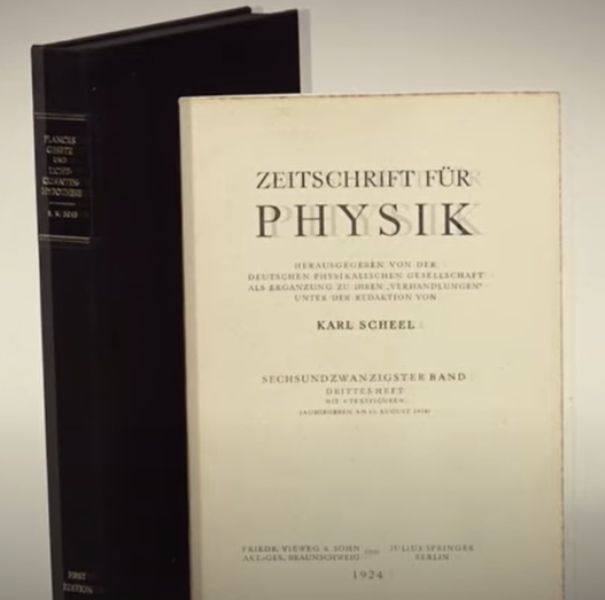
The German physics journal ‘Zeitschrift fur Physik’ that published Satyendra Nath Bose’s breakthrough paper
This work influenced Einstein so much that he invited S. N. Bose to work on quantum statistics and mechanics with him. Einstein once remarked on Bose’s work and said,
Bose’s derivation of Planck’s formula appears to me a step forward. The method used here gives also the quantum theory of an ideal gas,as I shall show elsewhere.”
On this success, Bose later remarked,
I had no idea that what I had done was really novel. I thought that perhaps it was the way of looking at the thing. I was not a statistician to the extent of really knowing that I was doing something which was really different from what Boltzmann would have done, from Boltzmann statistics. Instead of thinking of the light quantum just as a particle, I talked about these states. Somehow this was the same question that Einstein asked when I met him: How had I arrived at this method of deriving Planck’s formula? Well, I recognized the contradictions in the attempts of Planck and Einstein, and applied the statistics in my own way, but I did not think that it was different from Boltzmann statistics.
Formulating Bose-Einstein Statistics and Bose-Einstein Condensate
After receiving an open appreciation from Albert Einstein, Bose was awarded a scholarship and was sent to Europe, where he got the opportunity to work with prominent scientists like Marie Curie, Paul Langevin Louis de Broglie, and Einstein. In Berlin, Bose’s new interpretation was discussed and worked in collaboration with Einstein, giving rise to a theory famously known as the ‘Bose-Einstein Statistics.’
This theory included rules that helped to understand the behaviour of certain fundamental particles. These particles later became known as ‘bosons’ by Paul Dirac in honour of Bose. According to Ronald W. Clark in “Einstein: The Life and Times” (1965),
Einstein delivered two papers on “Bose‐Einstein statistics” before the Prussian Academy of Science. The second of these papers stimulated the thinking of the Viennese physicist Erwin Schrödiner, who proceeded in the next four months to erect, in Mr. Clark’s words, “the basic structure of what became known as wave mechanics.”
According to Mr. Clark, Einstein had immediately noticed that the statistical methods worked out by Bose could be extended to ordinary atoms under an assumption that was simultaneously developed by Louis de Broglie according to which material particles had simultaneous wave and particulate properties. Many years earlier, his assumption of Louis de Broglie was also presupposed by Einstein. Based on Satyendra Nath Bose’s quantum formulations, Albert Einstein predicted a state of matter in which separate subatomic particles, when cooled down to near absolute zero, unite into a single quantum mechanical entity, and this, on the real macroscopic scale, can be described using a wave function.
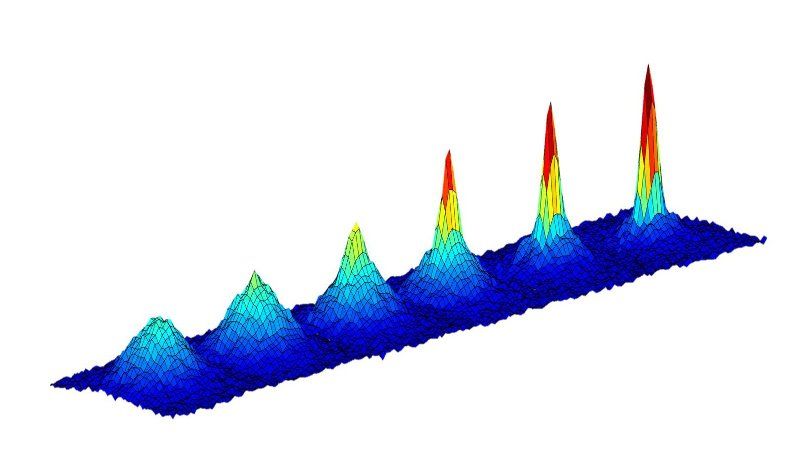
A graph diagram showing the emergence of Bose-Einstein Condensate. The emergence of a sharp peak in the later graphs confirms the formation of a Bose-Einstein condensate, a fifth state of matter that is occurring here at a temperature of 130 nanoKelvin, or less than 1 Kelvin above absolute zero.
Head of the Physics Department at Dacca University
On S. N. Bose’s return to India from Berlin, he became the Head of the Department post of the Dacca University (now, Dhaka University, Bangladesh) on the recommendation of Einstein. He remained as the Dean of the Science faculty there until 1945. In these years, he designed various laboratories and also designed an instrument for an X-ray crystallography lab. He published many papers in collaboration with M. N. Saha on the equation of state for real gases.
Positions Held
- Nominated member of the Rajya Sabha from 3 April 1952 to 2 July 1959
- General President of the Indian Science Congress in 1944
- Vice-Chancellor of the Visva-Bharati from 1956 to 1958
- Advisor to the Council of Scientific and Industrial Research
- President of the Indian Statistical Institute
- President of the National Institute of Science
- President of the Indian Physical Society
Awards and Honours
- Satyendra Nath Bose was nominated for the Nobel Prize in years 1956, 1959, 1962, 1968, 1969. Ironically, he never won it. These have raised speculations by scholars, calling him an unsung hero ((The Hindu)).
- Padma Vibhushan in 1954
- Honoured as a ‘National Professor’ by the Government of India in 1959 (remained for 15 years).
- Fellow of the Royal Society in 1958
Legacy
- The S. N. Bose National Centre for Basic Sciences was established by the state government in Calcutta in 1986. It falls directly under the Department of Science and Technology of the Government of India and is solely dedicated to basic research in mathematics.
- On 4 June 2022, Google with its artistic doodle accoladed Satyendra Nath Bose. On this date in 1924, his breakthrough paper on quantum conceptualisations was published by Einstein in the German physics journal ‘Zeitschrift fur Physik.’ ((Times Now))
- His bust has been placed in the gardens of the Birla Industrial and Technological Museum, Kolkata.
- A postal stamp was issued to realize S. N. Bose’s contributions to the Indian scientific sphere in 1994.
Death
Satyendra Nath Bose died on 4 February 1974 due to a cardiac arrest, leaving behind his wife, two sons, and five daughters.
Facts/Trivia
- S. N. Bose was a polymath. His knowledge extended to archaeology, mineralogy, biology, chemistry, soil science, literature, fine arts, and music.
- In his native Bengal, Satyendra Nath Bose was affectionately called Satyen Bose.
- When Bose was pursuing his intermediate studies, he got 110 marks out of 100. When the school’s headmaster questioned Bose’s maths teacher, Upendra Bakshi, for this unconventional marking, he replied,
Satyen had succeeded in the allotted time, in solving all the questions without excluding any of the alternatives.”
- Satyendra Nath Bose was trained in folk and classical music, both Indian and Western. It is said that he never used to miss invitations to informal musical concerts. Music was among his early love. He would often play the ‘Esraj’ (an Indian instrument similar to the violin) in a lonely corner of his home with tears rolling down his eyes. Bose also played the flute.
- The textbooks that Satyendra Nath Bose had to read to pursue his research were written in German and French. His passion for physics was such that he had mastered these languages to read them. He was a polyglot who also knew other languages like Sanskrit, Bengali, and English.
- S. N. Bose would often close his eyes in public forums, conferences, and meetings, making people think that he had fallen asleep, but he used to be alert all the time. One of his contemporaries, S. D. Chatterjee, once stated,
The conscious and the unconscious appeared to have a strange deep unity in his restless brain. At a different level of perception, the legend carved out a superb figure of a giant who was engagingly childlike and a man of supreme genius who was entirely human. Often he appeared to be immersed in laziness, but the somnolescence was full of alertness. Once presiding over a lecture of Professor Niels Bohr at the Saha Institute of Nuclear Physics, he had closed his eyes and it seemed that he was asleep. But when Professor Bohr hesitated before the blackboard and said ‘Perhaps professor Bose can help me here, he at once opened his eyes, explained the mathematical point, and seemed to revert to his unseeing meditation. On another occasion, at the same venue, he was presiding over a lecture by Professor Frederic Joliot Curie. After introducing the speaker in English, he closed his eyes as usual. But when Professor Joliot asked for an interpreter to render his speech in French into English and none came forward, Professor Bose opened his eyes, stood up and translated Professor Joliot’s speech into chaste English sentence by sentence.”
- He ran a night school that came to be known as the ” Working Man’s Institute.” ((Physics Today))
- Bose had very weak eyesight from early childhood.
- Bangiya Bijnan Parishad (a Bengali Science Association) was founded by S. N. Bose on 25 January 1948 to lead a Science Movement. It started a Bengali Science magazine, ‘Jnan-O-Bijnan,’ laying the foundation for Bose’s idea of teaching science to students in their vernacular language to maximize their creativity. This idea was later stressed by the former Indian scientist and president A. P. J. Abdul Kalam ((The Hindu)). This thought was highlighted by Prime Minister Modi on the occasion of Bose’s 125th birth anniversary ((The Times of India)).
- Rabindranath Tagore dedicated his only book on science, ‘Vishwa Parichay,’ to S. N. Bose. This book gives an elementary account of the cosmic and microcosmic world in Bengali. It was an effort in line with Bose’s initiative of popularizing science through the mother tongue.
- He wrote many books including Vijnaner Sankat O Anyanya Prabandha (Crisis in Science and Other Essays) and Satyendranath Bose Rachana Sankalan (A Selection of Satyendranath Bose’s Writings).

